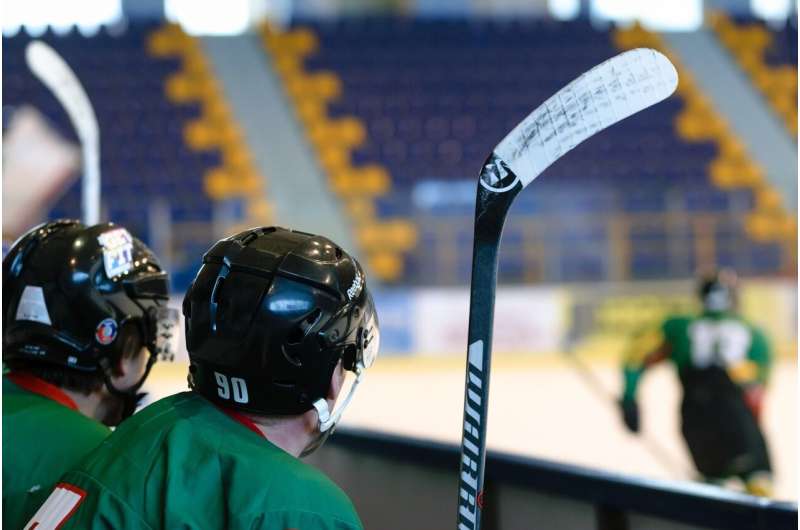
Like most sports technology, hockey helmets have evolved exponentially over the past 50 years. Gone are the days of the “egg shell” helmets worn by NHL superstars like Wayne Gretzky and Michel Goulet in the 1970s and 1980s.
As the primary piece of equipment used to protect hockey players (professional or amateur) from concussions and other brain injuries, researchers at Western University say it is vitally important to continue improving the quality of hockey helmets.
A Western Engineering team, led by Canada Research Chair Haojie Mao, ran a simulated human brain through a battery of tests and found the latest in helmet technology is good at mitigating direct hits but could be improved to withstand blows coming indirectly.
Using industry standardized tests, Mao and his collaborators Yanir Levy, Kewei Bian, and Luke Patterson simulated 672 hockey-impact events in the lab and found rotational velocity was the most common factor when brain strain (twisting or wrenching brain tissue beyond its limits) occurred.
When velocity (the quickness of a motion or action) is combined with a rotation, it produces torque, making the movement twist on impact. This type of impact to the head is shown to cause brain strain, potentially leading to a mild traumatic brain injury.
The resulting short-term symptoms of mild traumatic brain injury range from unconsciousness, headaches, cognitive impairments and dizziness to long-term effects like neurodegeneration, and in some cases, death.
With more than 69 million individuals experiencing a mild traumatic brain injury per year, it has become a critical health issue worldwide.
Making safer hockey helmets is one way to attack the problem head-on, said Mao. The Western engineers are working with Bauer Hockey, and a team led by biomechanics research analyst Ryan Ouckama, to integrate these findings into future helmet designs.
“The results of this study provide companies, like Bauer, with great reference points for adopting brain injury metrics when designing hockey helmets,” said Mao, an investigator at Western’s Brain and Mind Institute. “By using these results as a guide, helmets will be safer and will help reduce risks to concussions and other brain injuries.”
Going forward, the researchers will continue working with Bauer to help reduce any force axons in the brain. Axons are the long cables that snake away from every neuron in the brain where electrical impulses—carrying information and action items—travel away to be received by other neurons.
Source: Read Full Article
